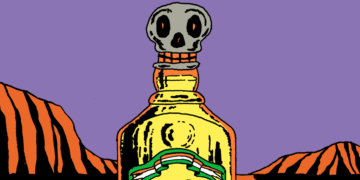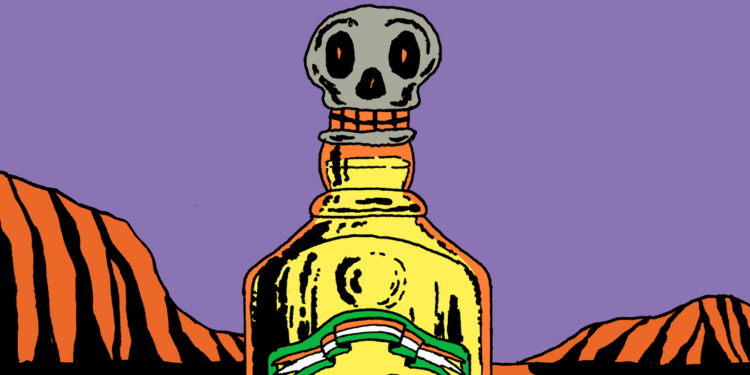President Trump’s Mexico agenda mostly revolves around his obsession with what he calls the “chaos” at the border. How ironic, then, that his proposed solution of tariffs is bound to generate chaos at the border by creating powerful incentives for black market trade.
On Wednesday, the Trump administration announced a slew of tariffs affecting many countries. He has previously threatened steep tariffs on Mexican products, arguing that the punitive move will force Mexico to address the problems caused by drug smuggling into the United States. But a sudden spike in the price of all goods coming from Mexico will only create an opening for criminal organizations to smuggle a wider range of products and expand their power.
We’ve seen this before: International sanctions led Russia to rely on a dark fleet of aging oil tankers sailing without insurance, and crackdowns on electronic money transfers by criminal organizations boosted cryptocurrency. America’s effort to halt the importation of tequila a century ago is also illustrative. During Prohibition, the campaign to stop Mexican spirits from being brought across our southern border unleashed violence, gave rise to what could be considered the first Mexican cartels and made tequila only more popular.
Mr. Trump campaigned heavily on his vow to secure our borders. It is the issue for which he has retained the greatest amount of trust — trust that could be seriously undermined if his tariffs blow up in his face.
At the start of the 20th century, the boundary between the United States and Mexico was largely notional. In that environment, the tequila maker José Cuervo began to forge an empire by focusing on American drinkers — displaying products at the St. Louis World’s Fair, engaging Southern Pacific to construct a railroad line to his distillery in the town of Tequila, and eventually even buying his own trains to penetrate Pancho Villa’s revolutionary lines en route to Texas. After Villa staged a bloody cross-border raid, Gen. John J. Pershing led about 10,000 U.S. troops into Mexico in pursuit.
When Germany offered to ally with Mexico and against the United States, President Woodrow Wilson responded by entering World War I — and by banning commerce with Mexican companies with too much “German influence.” As Cuervo’s nephew and business adviser was the German consul in Guadalajara, his tequila company was banned in 1918. That same year, the first section of border fence was erected and soon, the creation of a border patrol was authorized. Under the guise of preserving grains for food, the manufacture and importation of all hard liquor was also legally banned — and the black market exploded.
Seeing the opportunity, Cuervo banded together the owners of Sauza and Herradura to form a union organized on a German cooperative model — the cartel. It transported goods by rail to border towns, where smugglers carried bottles across on foot, in the trunks of cars, and through the open desert in donkey straddles and pack saddles.
The United States expanded enforcement and built more fencing in an effort to block the shipments, and the country’s foray into Prohibition in January 1920 extended import and sales bans nationally. Two months later, 25,000 empty tequila bottles were found in El Paso, all bearing the Cuervo label and all headed back to Mexico to be refilled and carried across again. The United States cracked down even harder — especially along the Rio Grande, where the shoot-first mentality of the Texas Rangers led to pitched gun battles across the desert and brush country.
In December 1929, as the first decade of Prohibition drew to a close, the editors of The Washington Herald tallied 1,360 deaths “through official violence,” with some of the highest numbers in El Paso — more than Al Capone’s Chicago. In fact, the border region of Texas accounted for roughly 8 percent of all Prohibition-related deaths nationwide by then. Cuervo’s tequila cartel unraveled after his death in 1921, bringing violence to the Mexican side of the border, too, as families vied for greater control of the trade and fractured into smaller cartels.
Cuervo, Sauza and Herradura are still some of the world’s leading tequila sellers. More than two-thirds of tequila produced last year went to the United States. That’s $4.5 billion worth.
Tequila makers worry that tariffs would not only strangle legitimate trade but also rekindle the black market. Brands producing premium products are especially concerned: The more expensive the item, the greater the incentive for thieves to steal it. Bandits are targeting “anything that goes up in price,” says Guillermo Erickson Sauza, a great-great-grandson of the founder of Sauza Tequila, whose products regularly sell for hundreds of dollars per bottle. He has had three truckloads hijacked on the American side of the border in the last year and a half and says the tariffs will “absolutely” increase the risk of such thefts.
Last week, as I drove the border region along the Rio Grande where tequila smugglers once did battle with the Texas Rangers, there was little evidence of chaos. People in villages like Boquillas del Carmen live quietly along the river, selling trinkets and tequila to tourists who enter via the official checkpoint. Cartels thrive on smuggling migrants and illicit drugs through a few defined border corridors. That could change drastically if Mr. Trump’s actions lead to a black market for all Mexican goods. His tariffs may help fill the coffers of the federal government and underwrite his tax cuts, but they also risk plunging the southern U.S. border back into turmoil — increasing smuggling, putting money in the pockets of gangs and cartels on both sides of the border and further escalating the cycle of enforcement.
Building a massive border apparatus hasn’t worked. A century ago it didn’t keep José Cuervo out of the United States; it made him a household name. And the company he started is still tequila’s largest manufacturer, under the principal ownership of Juan Beckmann Vidal, the grandson of the German consul whose foreign ties prompted America’s first ban. He now owns condos in Trump Tower.
Ted Genoways is a senior editor at the Food & Environment Reporting Network.
The Times is committed to publishing a diversity of letters to the editor. We’d like to hear what you think about this or any of our articles. Here are some tips. And here’s our email: [email protected].
Follow The New York Times Opinion section on Facebook, Instagram, TikTok, Bluesky, WhatsApp and Threads.
The post A Historic Tequila Ban Shows Us the Heavy Cost of Trump’s Tariffs appeared first on New York Times.



















